Reviews
John S. Robertson
USA, 1920
Credits
Review by Matt Bailey
Posted on 09 October 2010
Source Kino DVD
Categories 31 Days of Horror VII
Upon its publication in 1886, Robert Louis Stevenson’s The Strange Case of Dr. Jekyll and Mr. Hyde swiftly became one of the most oft-adapted pieces of literature of the twentieth century. A 1983 survey of adaptations and critical reception counted 67 film adaptations of the Jekyll and Hyde story, an additional 136 films that use thematic motifs developed in the original story, and 26 separate stage adaptations (not to mention one particularly effervescent Serge Gainsbourg song). This study having been published over a quarter-century ago, one can safely assume that these numbers have increased significantly since.
One of the reasons for the continued popularity of the figures of Dr. Jekyll and his sinister companion is their status as what Joyce Carol Oates has called “mythopoetic figures [of] autonomous creation,” which is a lovely way of saying that those who have never read Stevenson’s novella, who have never seen a stage play of the tale, who have never seen a film adaptation of the story still know the names Jekyll and Hyde and what they signify. The mythical allegory of a good man and his evil alter-ego have, over the course of a long century, entered the public consciousness and the public discourse and have thus become divorced, like Frankenstein’s monster and Count Dracula, from their original narrative context. From the Selig Polyscope Company’s first film adaptation in 1908 to Jerry Lewis’ 1963 The Nutty Professor and beyond, the figures of Jekyll and Hyde have become emblems of the perceived dual nature of humanity and the constant internal and psychological struggle between good and evil.
We might think of Jekyll and Hyde as variants on the myth of the Doppelgänger, a figure with no small amount of cultural and psychological baggage of his own and who haunts literature since classical mythology. The Doppelgänger archetype combines a hero and a villain into a closely-linked pair who may or may not be one. The many free adaptations of the Jekyll and Hyde story can be seen as Doppelgänger stories given a name with a certain cultural and archetypal resonance. While this may be true of many adaptations of the tale (archetypes are certainly very important conventions in Victorian literature and melodramatic theatre), what we have come to know as the Jekyll and Hyde story, including as it is presented in the 1920 film version of the story starring John Barrymore, is really a unique product of a long history of textual reduction, elision, addition, and bowdlerism, a complicated negotiation between the original source text and adapted texts, beginning with Stevenson’s novella and moving through two popular nineteenth-century stage adaptations of that text and the eleven silent screen adaptations based on a combination of the original source text, the stage plays, and contemporary legend surrounding the murders of Jack the Ripper.
Stevenson’s slim book is one of my favorites, a thrilling little slice of horror and narrative experimentation. Anyone who reads it and who has seen at least one of the many film adaptations cannot fail to notice that Stevenson’s sophisticated use of multiple points of view and a non-linear, almost circular, narrative time structure are always discarded in cinematic adaptation in favor of a straightforward, linear narrative and single point of view. It would take another 50 years and the twisty screenplay for Citizen Kane for the movies to catch up to Stevenson. One of the most interesting points of the book is that the reader does not find out until the penultimate chapter of the book (the last chapter is Jekyll’s suicide note) that Jekyll and Hyde are in fact the same person. It’s a fairly astonishing reveal, but no one who reads the book today will be a bit surprised because the story is famous enough for everyone to know the basic details without having read the book or having seen one of the films. Yet I would still recommend to anyone interested in the story a read through the novella. It continues to hold many surprises and stands tall on its own literary merits.
I could go on and on about the novella and the fascinating history of the many silent film versions, but as interesting as they are, those films recede into insignificance in the presence of Paramount’s 1920 film starring John Barrymore. Since the production, a year after the publication of Stevenson’s book, of a London stage adaptation, the role of Jekyll/Hyde has been a showcase for a bravura performance by a virtuosic actor, practically the Hamlet of the modern age. Richard Mansfield, a blindingly famous actor in his time, was a sensation in the role first in London, then in New York. Many imitators, for better or worse, followed, but the centerpiece of all stage performances of the role was the transformation from Jekyll to Hyde (and back again). Various actors handled this differently, from the invocation of all the trickery of the theatre including wigs, lights, and quick costume changes to the complete eschewal of such trickery in favor of pantomime and sheer acting talent.
The availability of camera trickery in the film versions should have raised the stakes for the transformation scenes, but you’d be surprised by how many early film adaptations handle the transformation with a lot of writhing by Jekyll and then a cut to a fully transformed Hyde. When it came time for Barrymore, by all accounts the greatest actor of his generation, to take on the role, he would have none of this presto-changeo. Though the grotesque appearance of his Hyde is aided considerably by make-up, his transformation scenes constitute a true spectacle: Barrymore writhes his body in apparent agony, screws up his face and rolls his eyes forward until the irises are barely visible above his lower eyelids, bares his upper teeth in a terrible grimace, and at one point literally flings his body up into the air and slams down onto the floor. It’s a shockingly physical performance, one that must have had him covered in bruises and sore from head to toe at the end of the day.
When the transformation is complete, Barrymore goes far beyond the ratty wig and dark circles under the eyes that sufficed for previous film performers. His Hyde contorts his body in crooked angles, has long, bony fingers that end in tattered claws, has lank, greasy hair, wild eyes, a hunched back, and a tall, sinister-looking hat. In a particularly witty yet horrifying sight gag, Barrymore removes his domed, slightly conical hat to reveal a hideous domed, slightly conical head. In another inspired scene, Jekyll sleeps and dreams of a giant, ghostly, hairy spider with Hyde’s head. The spider crawls up onto Jekyll’s body until it seems to enter it and suddenly Jekyll has transformed into Hyde in his own bed. It’s the kind of wild scene that makes you glad you’re watching a DVD so you can go back instantly and watch the scene again.
As towering as Barrymore’s performance is, though, that’s about all there is to the film. As it had been for Mansfield and other actors before him, the story is not much more than a vehicle for a performance. The plot bears only a passing resemblance to Stevenson’s original work and is thin enough that it verges on inscrutability (and scenes missing from surviving prints of the film do not aid matters). Given the popularity of the story during the time, however, I expect that much of the film’s original audience would have been familiar with a fuller version of the story whether via the novella or through one of the stage adaptations and could have filled in the plot holes on their own. Or they just didn’t care, which is just as likely.
The film is also lousy with the Victorian melodramatic clichés of its stage predecessors. Barrymore’s Dr. Jekyll is not just a good man, he’s practically a saint, the “St. Anthony of London,” as one character calls him. He is not just a doctor, but a socially progressive doctor who runs a free clinic for the poor. This is looked down upon by his good friend, the conservative Dr. Lanyon. He lives a clean life and pines for the affection of the angelic daughter of his dissolute friend, Sir George Carew. The film constructs rigid paradigms of behavior - progressive versus conservative, prudish versus licentious - and its supporting characters all seem suspicious of anyone who appears to be too good. This sets up the inevitable desire for Jekyll, with his ever-searching scientific mind, to overcome these dualities and constraints and to experience vice, perhaps even evil, without sacrificing his soul. His curiosity becomes his downfall. And while that promising kernel survives intact from the Stevenson original, the remainder of the film serves merely as a catalog of atrocities committed by Hyde and a line graph of Jekyll’s increasing horror over his inability to control his transformations.
Yet even if the film is only an excuse for Barrymore to give a flashy performance, it’s still a superlative performance. One can see a glimpse of the extraordinary modernizing influence his talent must have had on the actors of his day, moving them on from the pantomimic style of acting that dominated the Victorian stage and so much of early silent drama in much the same way as Brando’s later influence swept away the presentational style of acting that pervaded talking pictures.
Though I still have yet to see a film version of the Jekyll and Hyde story that does justice to Stevenson’s original book, I’m happy for filmmakers and actors to continue to use it as an avenue for exploring issues of duality, morality, and internal psychological conflict. Every generation should have its own Jekyll and Hyde, just as they have had their own Invasion of the Body Snatchers and Frankenstein to provide means to investigate what it means to be human and the ethics of creation. The 1920 film starring Barrymore is not a faithful adaptation, nor does it make much of an attempt to be one, but it is without question a document of the work of a gifted and preeminent performer. All the better that it manages to provoke some genuine chills as well.
More 31 Days of Horror VII
-

The Thin Blue Line
1988 -
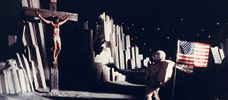
The Ninth Configuration
1980 -
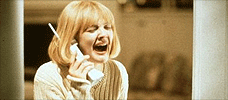
Scream
1996 -
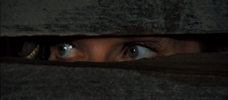
Dying Room Only
1973 -
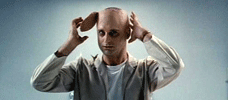
Brain Dead
1990 -
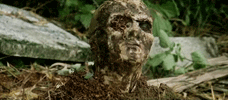
Zombi 2
1979 -
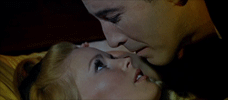
Dracula Has Risen from the Grave
1968 -

The Storyteller
1988-1989 -
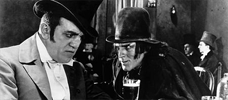
Dr. Jekyll and Mr. Hyde
1920 -
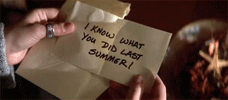
I Know What You Did Last Summer
1997 -
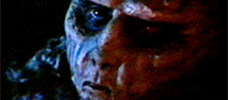
Don’t Be Afraid of the Dark
1973 -
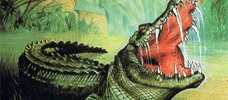
Dark Age
1987 -
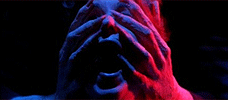
Inferno
1980 -
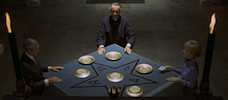
To the Devil a Daughter
UK / West Germany -
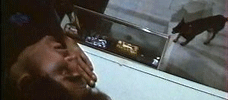
Trapped
1973 -
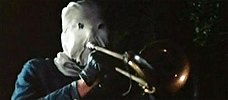
The Town that Dreaded Sundown
1976 -
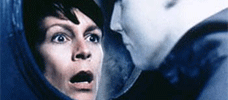
Halloween H20: Twenty Years Later
1998 -

Killdozer
1973 -
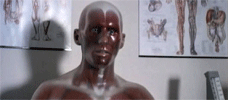
Pin
1989 -
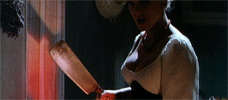
Frankenstein Created Woman
1967 -
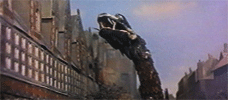
Reptilicus
1961 -
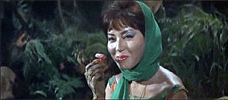
Matango
1963 -
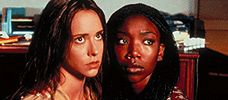
I Still Know What You Did Last Summer
1998 -
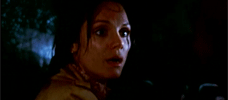
Night Terror
1977 -
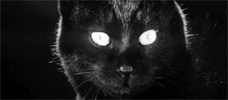
Kuroneko
1968 -

Demons
1985 -
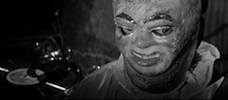
Paranoiac
1963 -
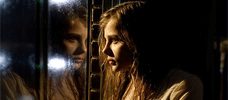
Let Me In
2010 -
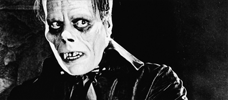
The Phantom of the Opera
1925
We don’t do comments anymore, but you may contact us here or find us on Twitter or Facebook.



